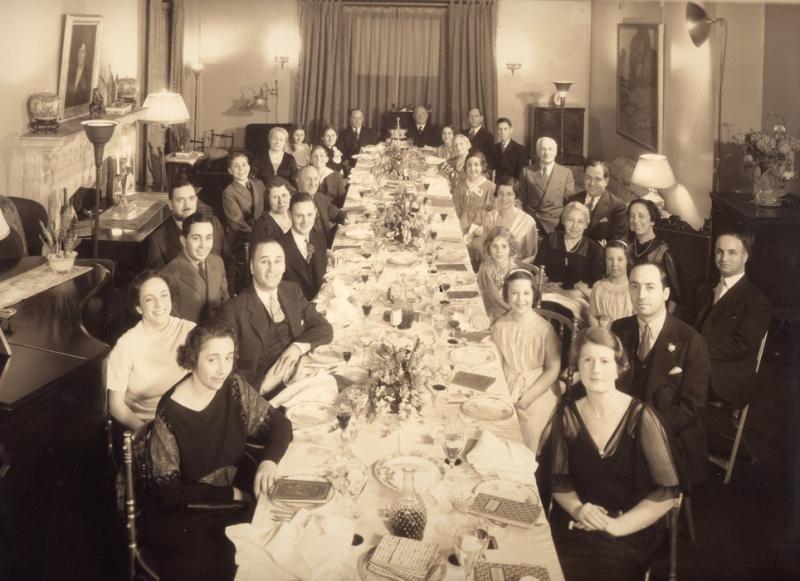Immigrant Stories, An Initiative
By Ani Kokobobo (University of Kansas) and Anne Lounsbery (New York University)

Our field came together in a pretty amazing way last spring, when many Slavists contributed to a fund designed to help immigrants and refugees by raising funds for the International Rescue Committee. It became clear in the course of this endeavor (organized by Jennifer Wilson), that many colleagues were contributing and felt passionately about the issue because they were themselves immigrants, or they were children or grandchildren of immigrants. Seeing that response, we felt that we might work to gather some immigrant stories in order to honor the immigrant experience, particularly at a time, when travel bans and ICE raids have made being an immigrant more difficult than it has been in a long time.
Particularly because we all know that the Slavic field has been deeply dependent on the contributions of immigrants from its very beginning. This tradition continues with countless first generation immigrants currently working in the field, and newer generations of immigrants entering our classrooms as both undergraduate and graduate students. We wanted to give these people a chance to tell their story and to have them be accessible to others in the field. We were very pleased with the response we got and the beautiful stories we were able to share. The archive of immigrant stories was kindly hosted by Eliot Borenstein and the NYU Jordan Russia Center: http://jordanrussiacenter.org/tag/immigrant-stories/
The archive above displays from people whose lives have been touched by immigration in myriad ways. We have stories from first-generation, second-, and third-generation students and faculty in the field, all of them capturing really interesting slices of life often in the first person. We encourage colleagues to click on the link above and read through some of them. Although the project has been in hiatus during the summer, we would hope to continue if there is interest, with a special focus on giving younger people, especially undergraduate and graduate students, a forum to tell their stories. If students are involved in our field in any way, or if they are from our target REES areas, we welcome their stories, so feel free to contact us or to give our information to students who may be interested (akokobobo@ku.edu; anne.lounsbery@nyu.edu).
A project like this is deeply personal for everyone involved, so we would like to conclude with some more personal thoughts. One of us is a first-generation immigrant and the other comes from a multi-generational American family, so we approached this project with our own, very different motivations.
Ani Kokobobo: For me, the impetus for the initiative came from a very personal place. As a first generation immigrant from Albania (est. 1997), I experienced the challenges of immigration first-hand. Probably the biggest challenge was feeling like I had to erase my own difference in order to fit in America. The process of acculturation happens rapidly when you are young, and as an awkward teenager I did my best to fit in and draw as little attention to my foreignness as possible. Paradoxically, I found that the more I fit in and sounded like I could be from the Midwest, the more I wanted to mourn the erasure of my difference. With everything that happened this past year with immigration and the travel ban, I experienced my own immigrant identity more than usual. I had the opportunity to write and publish my immigration story last January. I found it deeply cathartic and healing to do so, so I wanted others to have this same opportunity. I had experienced being an immigrant as an assault on my previous identity, and telling the story felt like an act of recovery, an excavation of the past. Reading many of the stories in our archive, including my own, I notice a similar emphasis on the objects and material culture of the immigrant life. Objects like photographs, toys, phones, clothes, books, and others, are exhumed from the past to help tell stories of cultural displacement.
Anne Lounsbery: I’m a WASP from San Diego who grew up identifying and singing along with Tevye's daughters—ridiculous, I know. My ancestors on both sides, and my husband’s as well, came to North America in the seventeenth and eighteenth centuries: I have always found this unspeakably boring. There is much sentimentality in my desire to imagine the United States as a collection of shtetls, Italian stonemason guilds, and Nigerian hair salons—a giant Queens, basically—and I know that what I have been able to enjoy as a happy spectacle has often been the result of others’ pain and exclusion. But still, and in the most serious way, both my discipline and my country are unimaginable to me without immigrants and immigrant narratives. In graduate school when I became a student of American culture and history (especially slavery) alongside Russian, even the darkest truths about my country did little to diminish my love for these stories, in which I could often find glimmers of hope even when they were full of heartbreak and injustice. In high school I was shocked to learn that many countries still adhere to a more or less blood-and-soil version of citizenship; I was proud, at that moment, that mine did not. Likewise I’m proud to be part of an academic discipline that has been immeasurably enriched by brilliant new arrivals from Eastern Europe and the former Soviet Union. This non-immigrant is a proud citizen of immigrant nation.
